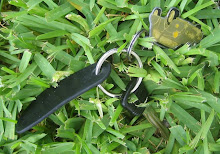
Looking at the Old Royal Naval College.
 Nimish stands in awe in front of the Queen's House.
Nimish stands in awe in front of the Queen's House. Looking up toward the Royal Observatory (upper right).
Looking up toward the Royal Observatory (upper right). The Royal Obervatory.
The Royal Obervatory. 24 hour clock. All 24 hours are shown on the clock in Roman numerals.
24 hour clock. All 24 hours are shown on the clock in Roman numerals. I straddle the Eastern and Western hemispheres at the Prime Meridian just behind the Royal Observatory.
I straddle the Eastern and Western hemispheres at the Prime Meridian just behind the Royal Observatory. The Millennium Clock displays Greenwich Mean Time (GMT) at the Prime Meridian.
The Millennium Clock displays Greenwich Mean Time (GMT) at the Prime Meridian.
 View from the hill the Royal Observatory sits on.
View from the hill the Royal Observatory sits on. Being so close to the Prime Meridian causes strange effects in some people. There is a longer queue here to take your picture on the Prime Meridian. We were smarter to take our pictures at the Prime Meridian behind the Royal Observatory. ;-)
Being so close to the Prime Meridian causes strange effects in some people. There is a longer queue here to take your picture on the Prime Meridian. We were smarter to take our pictures at the Prime Meridian behind the Royal Observatory. ;-) Two old mechanical clocks. All the mechanics were hidden in the walls behind the clocks. The viewing glass was put in later.
Two old mechanical clocks. All the mechanics were hidden in the walls behind the clocks. The viewing glass was put in later.
Many solutions were proposed for how to determine longitude at the end of an exploratory sea voyage, and hence, the longitude of the place that was visited (in case, for instance, one would want to revisit the location or place it on a map). The practical methods relied on a comparison of local time with the time at a given place (such as Greenwich or Paris). Many of these methods relied on astronomical observations relying on the predictable, "clockwork" nature of motions of heavenly bodies. John Harrison instead set out to solve the problem in probably the most direct way: by producing a reliable clock. The theory was simple and had been first proposed by Frisius. The difficulty, however, was in producing a clock which could maintain accurate time on a lengthy, rough sea voyage with widely-varying conditions of temperature, pressure and humidity.
John Harrison's H4. Harrison's 4th timepiece created to solve the longitude sailing problem. H4 took six years to construct and Harrison, by then 68 years old, sent it on its transatlantic trial in the care of his son, William, in 1761. When HMS Deptford reached Jamaica, the watch was 5 seconds slow, corresponding to an error in longitude of 1.25 minutes, or approximately one nautical mile.



No comments:
Post a Comment